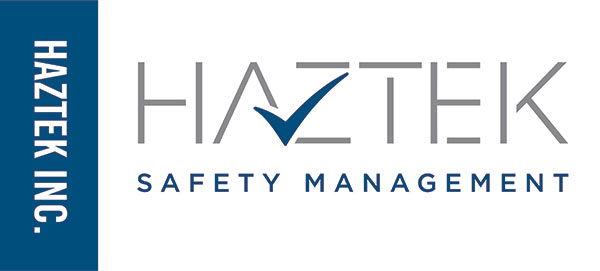The clear definition of Cinematic should make you want to change your methods of video marketing as soon as possible.
by Robert Blanda of CaddisArt Cinematic Marketing
We’ve all seen movies, either at the theater or in the comfort of our home. Each and every one of us has a favorite or a list of favorites. In my case, I have a top 1o in nearly every genre of films. What draws us to watch movies, or in some cases documentaries, is the feeling that not only the director and producer have left you, but the cinematographer.
Like many things, cinematography is not only a skill, but an art. A cinematographer will work tightly with producers, directors, talent and most of the staff of any set. His or her main focus is to convey their vision into pictures. That’s it. There’s really not much more to the job. Except maybe a hundred or so things.
First and foremost, the look, feel and sound of a scene or group of scenes is number one on the list. The cinematographer has to not only please the people paying him or her, but please the audience as well. With that in mind, there needs to be not only an arsenal of skill and art bouncing inside the brain of this person, but the equipment must support the vision. Here’s where the hammer meets the nail.
We’ve seen movies and television change very dramatically over the years. From the old black and white sitcoms to the 80’s soap opera era – all the way up to a 60 second pharmaceutical commercial of today. It’s very clear that the equipment of today far surpasses the quality of yesteryear. But were our mindsets so different back then? When color television came to your living room, you saw things very differently. So did your perception of what you were watching.
Cinematic Video Marketing is no Different.
Look at a commercial from a product you remember as a child, let’s use the Band-Aid® Commercial from the 1950’s. Albeit primitive, the message came across very clear. Let’s face it though, it wasn’t pleasing to the eyes, even by 1950’s standards. The pictures were flat, washed out and muddy. The voice-over that accompanied it was on-par for the period, but is also flat and more AM radio-like. It was more of a short infomercial explaining the product and their thoughts of how the product should appear in the eyes of consumers.
Let’s jump to a commercial from the 70’s of the same brand (commercial here.) Jingles were nothing new, but commercials were cut down to size at :30 seconds. So it was important for the producers to create something very worthy of a “ear worm” so you would repeat it in your head. This isn’t an easy thing to do in 30 seconds. Albeit in color, the film look is washed out and lacks accurate color and contrast. However, look closer and you’ll see a familiar face near the end of the clip. It was important for movie stars and popular figures at the time to be using their product. They were getting better, but not by much.
On to the 80s: This version of their commercial was very different. Very little dialog, strong presence of an audio bed, and a familiar concept of mom and son. There was a lot captured here that the producer had intended without you even realizing it. You can count them – I counted 10 very distinct attributes of this piece other than the Band-Aid® concept itself. They intentionally left out an explanation of the product or how it’s been improved. Instead, they’re pulling on your heartstrings with a feeling that the roles are reversed and the son is taking care of mom. It’s a very nice message and the lighting, color and depth of field is starting to get better. In the absence of widescreen and high definition, they are clearly on the right track making their message more appealing to the eyes and ears. Although still :30 seconds, this commercial seems to fly by because the viewer’s mind is trying to figure out what’s going on in the scene. That revelation doesn’t come until the end when you see the product and it’s location.
It became very different in the 90’s: In this commercial, the cuts are very quick, it’s more upbeat and the Jingle has changed slightly. The colors are more vibrant, but in absence of bokeh or “background blur” to give the scene a shallower depth of field. Notice that in the first scene with the two young girls, it is very hard to see the product itself on the girl’s finger, so clearly they are relying on the Jingle to get you to know the brand. Also, the ‘informative” portion of the commercial has returned, now with computer animated graphics and a softer voice-over. In this instance, they’ve also included a little bit of racial diversity as also seen in the 1970’s commercial. We’re also still in absence of the widescreen or HD format. It’s coming, folks.
That brings us to 2016: Clearly, they’ve made some cinematic changes. First thing you’ll notice is the color. It’s crystal clear and very accurate to the human eye. We’re also now seeing high-definition at 1080p, and widescreen format. Much more attention has been paid to the audio quality of the message now even though some of it is clearly lip-synced. Another noticeable difference is the depth of field. They are now using a shallow DOF with a nice bokeh, much better lighting and quick cuts to keep your attention. There is also a clear difference in diversity from many races, including a dog (why, I don’t know.) They’ve switched to female narrative, which we find to be progressive. Lastly, the logo at the end is very bright and clear, trumping all other versions of the commercials.
It’s clear why making your message, docu-short, commercial – or any other marketing effort – into a cinematic and highly visual effort. Audio should be clear, and the video should be nothing short of stunning.
And if you’d like to ask me for my honest opinion, there should be truth in advertising. Just watch my favorite cinematic commercial.
Thank you for reading. I have taken a personal journey back in time to my youth while writing this blog.
.

“CaddisArt did a great job helping me to get my business going in the right direction. I am not used to this sort of customer service!”

CaddisArt has been managing our non-profit military history organization’s social media marketing needs for the past year and has done so in the most exemplary manner. Their professional staff has met our communication and promotional requirements most admirably, and with the highest customer service attention. we highly recommend their services and expertise in this regard.









